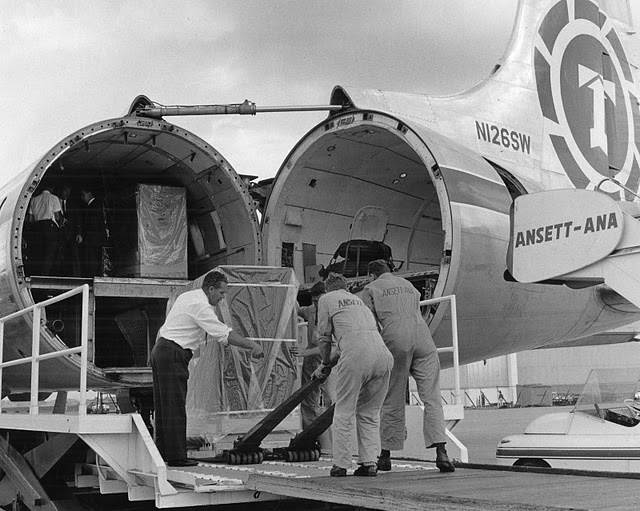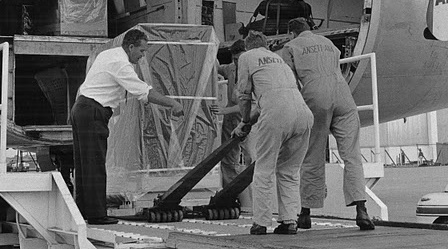Preamble
The Australian Computer Society (ACS) was formed 50 years ago, when the various state computer societies joined forces.
To mark the occasion, the ACS has initiated a heritage project to honour the many individuals who have contributed to the growth of the ICT profession in Australia.
At the heart of the project is a history of computing in Australia. It is not just a history of the ACS, but the history of a profession.
Australia has the longest computing history of any country, excepting the US and the UK, and CSIRAC in the Museum of Victoria is the oldest computer still in existence.
Chapter 15: The IBM S/360 in Australia
The modern mainframe era began when IBM announced the System 360 range on 7 April 1964. It was announced simultaneously around the world, and Australia was to get some of the first machines. The S/360 forever changed the way people thought about computers. It was the first ever family of computers, the first example of a consistent architecture across computers of a different size.
Early Australian users of the S/360 included chemical company ICI, real estate agent LJ Hooker, pharmaceutical distributor Drug Houses of Australia, and car companies GMH and Ford.
Qantas, Australia’s national airline, immediately ordered three of the machines, a Model 40 and two Model 30s. The Model 40 was used for payroll and other corporate systems, while one of the Model 30s was used for airline reservations. The other was used for message switching.
The Qantas reservation system was not the first in the world to be computerised. That distinction belongs to American Airlines’ SABRE (Semi-Automated Business Research Environment) system, jointly developed by the airline and IBM in the late 1950s, which used IBM 7090 computers. But the Qantas system was the first developed for the S/360.
The existing system was largely manual and very labour-intensive, supplemented by teletype ‘tickertape’ machines that operated over dozens of phone lines. Clerks seated on stools entered details into a ledger.
IBM Australia’s archives tell the story:
“When a booking came in via tape from the travel agent, the reservation clerks would enter the details for each flight in each ledger. When the flight was full, a line would be drawn and a message sent to all offices informing them that no more bookings could be taken. Cancellations created another manual process of contacting each sales office in turn.
“Over the course of about 18 months IBM and Qantas programmers designed the reservations application and wrote an operating system. The System 360s had just 64KB of memory stored on a costly ferrite core, yet powerful enough to support Qantas’s large throughput of messages and reservations. Data was stored on Model 3211 disk drives with removable disk packs.
“The system created computer records available from a single centralised source, creating enormous benefits for the airline.”

A S/360 Model 30 arriving in Australia in 1966. Source: IBM Australia
The Qantas reservation system was so successful that IBM Australia took its systems engineer Ron Carr to England to show the world-first system to BOAC (now British Airways). In 1966, Carr transferred to IBM in the United Kingdom to work on the company’s new IPARS (International Passenger Airline Reservation System).
SABRE and other one-off systems that IBM had developed for other airlines were all to be incorporated into IPARS, parts of which evolved into the TPF (Transaction Processing System) software, the real-time operating system still used by the S/360’s descendants today.
After its introduction, the S/360 quickly became the standard operating environment for most large corporations and government agencies. But in Australia IBM did not get it all its own way – major users such as the Census Bureau and BHP instead adopted machines from IBM’s fierce rival Control Data.
Another major early user of the S/360 in Australia was oil company Shell. It used a Model 65, linked to terminals at refineries in NSW and Victoria which transmitted data on the performance of refinery equipment, highlighting areas where corrective action should be taken by Shell engineers.
Even when the S/360 was introduced, it was no technical miracle. Its memory management was primitive, its peripherals performed poorly, its processors were slow, and it had poor communications capabilities.
But it was an architecture. It was all things to all people. It excelled nowhere, except as a concept, but it could fit just about everywhere. For the first time, upward compatibility was possible. The phrase "upgrade path" entered the language. With the S/360, IBM also promised compatibility into the future, protecting customers' investment in their applications and peripherals.
In 1970, the S/360 evolved into the S/370, with most of its features intact. Since then it has grown further, going through a number of models and name changes.
The architecture, in the form of the IBM z Systems, still exists today, and is still used by most of the world’s major financial institutions, including all of Australia’s ‘Big Four’ banks. Every time you withdraw cash from a bank’s ATM, you are using a computer system that had its origins on the IBM System/360.
Previously published:
Chapter 14: IBM redefines the computer industry
Chapter 13: Control Data Australia (part II)
Chapter 12: Control Data Australia (part I)
Chapter 11: The Australian Computer Society
Chapter 10: Five Computer Societies
Chapter 9: Australian made, Australian designed
Chapter 8: Australia's Computer Industry in 1962
Chapter 5: SILLIAC and the Snowy Mountains Scheme
Chapter 3: Harry Messel and the birth of SILLIAC
Chapter 2: The first Australian Computer Conference
Chapter 1 -The start of Australia’s computing history
Veteran ICT journalist Graeme Philipson is researching and writing the Heritage Project book, which is due for release on the 50th anniversary of the formal incorporation of the ACS, on 3 October 2017.
The project also involves the creation of a ‘virtual museum’, cataloguing hardware and other artefacts, and collecting and curating documents on the history of the industry, including oral histories of as many people as possible.
Please get in touch with Graeme if you would like to contribute, at [email protected]
Do you have early memories of the ICT industry in Australia? Help us make history by sending us your story! Record or write your memories to be included in our historic ACS Heritage Project. Details here.










